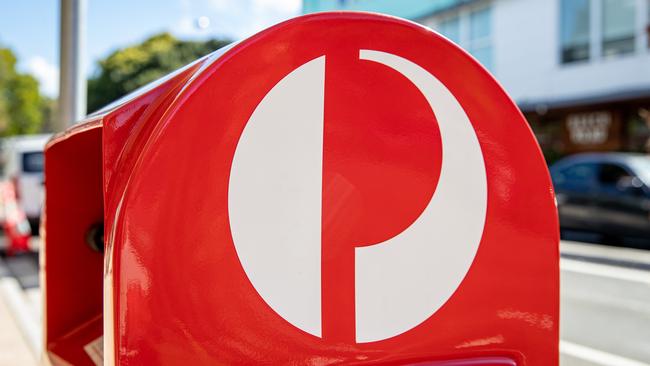
The big structural winds buffeting Australia Post require a big response, but public ownership of the postal service means solutions to its problems aren’t going to come from a Canberra-led review.
Through the rise of the digital economy, Australia Post is quickly heading towards a serious crisis as its traditional letters business falls deeper into loss-making territory.
This year any earnings from Australia Post’s booming parcels business are not going to be enough to cover the letters shortfall, meaning Australia Post is on track for its first loss since 2015. The difference is that now there is little prospect for a sustainable recovery without hard decisions.
Australia Post’s new CEO, Paul Graham, a former top Woolworths and DHL executive, is pulling what levers he can under his Post26 corporate plan to build a modern e-commerce, digital logistics business and a sustainable mail delivery business.
The review has come about in part from Graham’s talks with the government as he seeks a mandate and legislative backing to push through changes.
The question that needs to be asked in the review: in a world where telcos, airlines, banks and insurers provide essential services, does the taxpayer really need to own the nation’s biggest parcel delivery business that underpins online shopping?
And to take this a step further: should customers of the parcel service be expected to subsidise an old world mail business as well as the $348m annual community service obligation costs – a legislated requirement to deliver a letter at the same price to everyone in Australia? The review remains silent on these and Communications Minister Michelle Rowland has already ruled out privatisation.
It was almost a very different outlook for Australia Post under a radical plan hatched by former chief executive Ahmed Fahour and the Turnbull government in 2016. Fahour came close to convincing the then prime minister Malcolm Turnbull to privatise Australia Post’s lucrative parcel delivery business.
The motivation was that the parcels business – which is Australia’s market leader with 70 per cent share – was worth more than $13bn and selling it would provide a big dividend for the government and the traditional postal services.
Some of the funds from the sale would give Australia Post a much-needed capital injection to manage the terminal decline of the letters business.

Crucially, if the sale of Australia Post’s parcel businesses had proceeded, it would have secured enough money to not require one cent of government funding until the last letter was sent in Australia.
The review sets out the stark challenges Australia Post’s traditional letters business faces, including the steady decline.
Graham says the consultation will help Australia Post get a greater understanding of what is important for Australians, then making sure they are adopting services and investments to meet those needs.
“Today, we provide mail five days a week, in a regulated regime that we operate under and part of the consultation process is to really hear what Australians want. We’re not sure if they want mail five days a week, but they certainly want parcels five days a week or even more,” he says.
Graham says it is common among global postal operators to be in the parcels business. “We have lots of multinational and local competitors in that business. It is a very tough business to be in but we have, through the network that the Australian people have invested in over many, many decades, build the capability to be a strong player in that field,” he says.
“It is a growth opportunity for us and it’s one that we continue to invest in and continue to provide very important services, particularly to remote regional Australia.”
Currently businesses and governments send more than 97 per cent of the letters in Australia.
Households send on average 15 letters each year for personal reasons, while small businesses are estimated to send 68 letters. These are average numbers, which means many households would send less than that.
Businesses are already driving customers to sign on to digital statements for speed and to save on costs. Over time it is expected governments will follow, accelerating the decline in letters. By the end of the decade, letter volumes are expected to fall below 500 million annually, meaning the average household will receive less than one letter each week.
On the other side of the ledger, total parcel deliveries passed 1 billion units in 2021 and the market is expected to grow at an annualised rate of 5.4 per cent over the next five years.
As part of the review, the government is now looking at reducing the frequency of letter deliveries, increasing parcel deliveries to potentially seven days a week to help retain market share, while raising stamp prices to shore up Australia Post’s letters business.

The uncomfortable reality is that these measures won’t work – not in the medium to longer term.
It was only last year that Australia Post asked the Australian Competition & Consumer Commission for a stamp price rise and during the pandemic it delivered letters every other day, while costs continued to mount.
While a five-day-a-week delivery service is expensive, another significant cost is the network of licensed post offices (LPOs) – small “franchise” businesses created 30 years ago when Australia Post expanded its distribution network.
Under Fahour’s plan, it was understood the proceeds from the sale of the parcels business would have been used to buy back and close many of these LPOs. This aim was about cleaning up the over-servicing of customers in metropolitan areas.
In the inner Melbourne suburb of Richmond, where Australia Post will next year relocate its corporate headquarters, there are already five post offices and LPOs.
Fahour had spent years building up Australia Post’s parcel business, which was known internally as the “Blue P” in reference to its use of the Australia Post horn logo under the previously acquired StarTrack branding.
As well as buying out the StarTrack business previously owned by Qantas, Fahour invested a further $2.5bn in its parcel business over several years, cementing it as Australia’s market leader and in the process fending off commercial overseas competitors, including DHL, FedEx and UPS.
Executives at the time were even split into managing the “Blue P” and Post’s letter business, known as the “Red P”. Australia Post’s Sydney office in Strawberry Hills was known internally as StarTrack house, allowing a new base for a separate and privately owned parcels business.
The plan failed to gain political traction and Fahour eventually resigned in early 2017 after a clash with the government over his multimillion-dollar salary. Fahour’s successor, Christine Holgate, quickly shelved the “Blue P” brand, concerned it diluted the strength of the main brand, particularly as Australia Post was looking to secure international business.
Holgate also gained favour among many licenced post office owners by vowing to support their network, which gained a significant capital injection after she struck a deal – worth $66m a year – with the big banks.
But this was again a short-term measure. Post offices will face the same eventual decline in foot traffic that has led to the big banks to close branches amid a shift to more digital services. This will result in the value of the “bank at Post” deal diminishing over time.
Hard decisions will need to be made to secure a sustainable future for Australia Post – even a decision on the value of a letters business in the digital age.
There is a strong business inside Australia Post and like all good businesses it needs to evolve.



